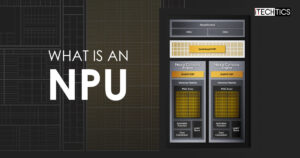Active Directory is the backbone of many corporate networks, serving as the central hub for managing user accounts, permissions, and access to network resources. Within Active Directory, there are two key concepts that are often confused: the domain and the forest.
While they are both fundamental components of an Active Directory, they serve different purposes and have distinct characteristics. Understanding the difference between the two is critical for anyone responsible for managing and securing a Windows-based network.
An organizational Active Directory consists of different elements, such as objects, Organizational Units, etc. However, without diving into the micro-details, we are going to compare only forests and domains.
In this article, we will explore the key differences between Active Directory forests and domains, providing real-world examples to help illustrate their unique roles and functions.
Table of Contents
On This Page
What is Active Directory
Active Directory is like the ultimate organizational assistant, keeping track of every user, computer, and application on the network. It assigns unique identities to each resource, so they can be easily located and accessed. It also maintains a list of permissions, granting or denying access to specific resources based on a user’s credentials.
It is a powerful database, stores all the information about the network and its resources. But it’s much more than that. It’s a living, breathing system that adapts to the needs of the network and its users, constantly evolving to keep up with the demands of modern technology.
If you want to find AD User info, follow our article: How To Find Active Directory User Information With PowerShell.
What is Active Directory Forest
Imagine a sprawling forest, with majestic trees, winding paths, and hidden clearings. Each tree in this forest represents a domain in Microsoft’s Active Directory, containing its own set of users, computers, and policies. But there’s a larger structure that ties all of these domains together, like the overarching canopy of the forest. This is what we call the Active Directory forest.
The forest is the highest level of organization in an Active Directory configuration, providing a way to manage multiple domains as a cohesive unit. It serves as a container for all the domains and establishes the trust relationships between them, allowing resources to be shared and users to move between domains seamlessly.
However, like any vast and complex ecosystem, the forest can also be vulnerable to threats. Security breaches in one domain can potentially impact other domains in the forest, making it crucial to have strong security measures in place.
But with careful planning and management, the Active Directory forest can provide a stable and flexible foundation for even the largest and most complex network environments. It’s like a forest ranger, keeping watch over the entire ecosystem and ensuring that everything runs smoothly and safely.
Make your Active Directory monitoring hassle-free with easy tools. Follow the article for more details: The Best Active Directory Management Tools For Easy AD Administration & Monitoring.
When Should You Create a New AD Forest?
When designing an AD infrastructure, it’s important to consider when a new forest should be created. Here are some authentic reasons and examples of when it might be necessary to create a new AD forest.
Security Isolation
One reason to create a new forest is to achieve security isolation between different parts of an organization. For example, if a company has multiple subsidiaries or departments that require strict security measures, it may be beneficial to create a separate forest for each one. This way, any security breaches or unauthorized access in one forest will not affect the others.
Organizational Independence
Another reason to create a new AD forest is when different organizations need to maintain their own independent IT infrastructure. For example, if a company acquires another company, it may make sense to create a new forest for the acquired company, which can maintain its own domain and administrative autonomy.
Legal Requirements
In some cases, legal requirements may necessitate the creation of a new AD forest. For example, if an organization operates in multiple countries with different data protection laws, it may need to separate its AD infrastructure by country to ensure compliance.
Scalability
AD forests can become complex and difficult to manage as they grow in size. If an organization is expanding rapidly, it may be necessary to create a new forest to maintain scalability and manageability.
Administrative Boundaries
Finally, creating a new AD forest may be necessary to establish administrative boundaries between different parts of an organization. For example, if a company has multiple divisions with different IT teams, it may be beneficial to create separate forests for each division to allow for independent management and control.
What is Active Directory Domain
An Active Directory domain is like a central hub where you can log in and access resources that you are allowed to use. It makes sure only authorized users can access information. Multiple domains can be connected through a tree structure, so users and resources can be shared across the domains.
This helps keep everything organized and consistent across the network. Think of it like a bustling city, with lots of activity but everything running smoothly, thanks to careful planning and management.
An Active Directory domain is always a part of a larger forest. There can be multiple domains inside a single Active Directory forest.
Learn how to install & use Active Directory Users and Computers on Windows 11, 10.
How Many Domains are Inside a Forest?
Every forest has a beginning with a single domain. The size of a domain in terms of the number of users it can accommodate is dependent on the slowest link that is used for replication between domain controllers, as well as the amount of bandwidth that is reserved for the Active Directory Domain Services (AD DS).
If a forest contains no more than 100,000 users and has a connectivity of 28.8 kilobits per second (Kbps) or higher, it can accommodate a maximum of 10,000 users with 1% bandwidth usage. However, for 5% and 10% bandwidth, the maximum number of users is 25,000 and 40,000, respectively.
Note: The aforementioned values are based on an environment in which new users join the forest at a rate of 20 percent per year, users leave the forest at a rate of 15 percent per year, each user belongs to five global groups and five universal groups, and the ratio of users to computers is 1:1.
Additionally, Active Directory-integrated Domain Name System (DNS) is used, and DNS scavenging is also used. It is important to note that these recommendations are not applicable to forests with more than 100,000 users or connectivity of fewer than 28.8 Kbps, and expert guidance from an experienced Active Directory designer should be sought in these cases.
When Should You Create a New AD Domain?
Designing an Active Directory (AD) infrastructure requires careful consideration of when it’s necessary to create a new domain. Make sure to understand the following reasons before creating a domain.
Geographic Separation
When resources need to be separated geographically, creating a new AD domain can be beneficial. For instance, if a company has multiple offices in different regions, each office can have its own domain to ensure efficient management of local resources.
Security Requirements
A new AD domain can be created when there are security requirements that necessitate stricter controls. For example, if a company has highly sensitive data that needs to be protected from unauthorized access, a separate domain can be created with more robust security measures.
Organizational Changes
Changes such as mergers, acquisitions, or divestitures may require the creation of a new AD domain. For instance, when a company acquires another with its own AD infrastructure, a new domain may be needed to merge the two.
Domain Consolidation
If an organization has multiple domains that are no longer needed or have become too complex to manage, domain consolidation can be necessary. Consolidating domains can simplify administration, reduce costs, and improve security.
Are AD Domains and Forests The Same?
Active directory forest and domain are not the same things, although they are closely related. While domains are part of an AD forest, a forest is a higher-level construct that contains multiple domains and provides a common structure and schema for them to work together. Each domain in an AD DS tree shares a common schema and global catalog.
AD Domain Example
Suppose you have a company with several departments, each with its own set of users and computers. You can create a domain for each department, such as finance.itechtics.com, sales.itechtics.com, and marketing.itechtics.com. These domains can be connected in a tree structure, allowing for resource sharing and communication across different parts of the network.
An Active Directory forest, on the other hand, is the top-level logical container in an Active Directory configuration that contains domains, users, computers, and group policies. A forest is a collection of one or more domain trees that share a common schema, configuration, and global catalog.
AD Forest Example
Imagine you have two separate companies that merge into one. Each company has its own Active Directory domain, with its own set of users and computers. You can create a new AD forest to bring these domains together under a common umbrella, with a shared schema and global catalog.
This allows for easy collaboration and resource sharing between the two companies, while still maintaining separate domains for each one.
Conclusion
Understanding the difference between Active Directory forest and domain is essential for any organization that relies on this technology for its IT infrastructure. While both serve important purposes, they have distinct characteristics that impact their functionality and management.
Active Directory forest provides a way to manage multiple domains as a single entity, while Active Directory domain is a specific subset of the forest that contains users, groups, and computers.
As technology continues to evolve, having a strong grasp of Active Directory and its various components will become increasingly important for organizations of all sizes.








